

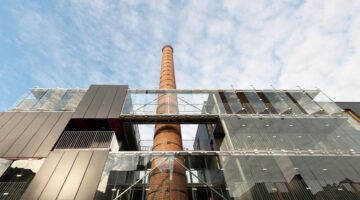
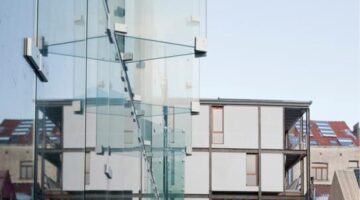
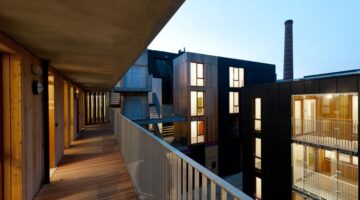

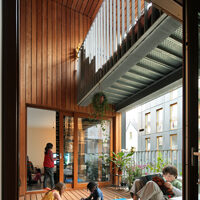
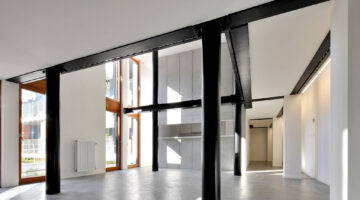
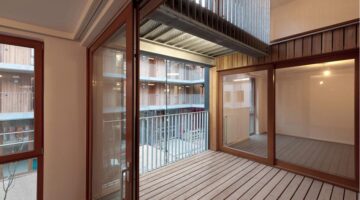
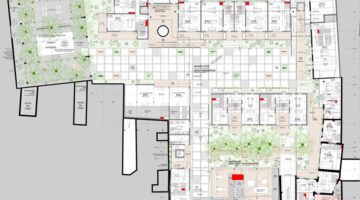
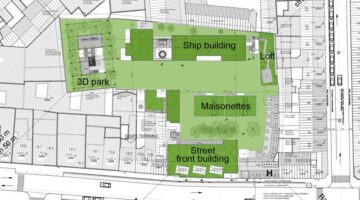
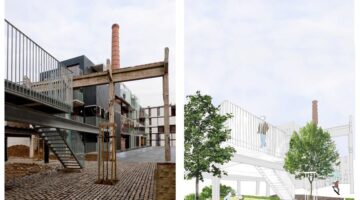
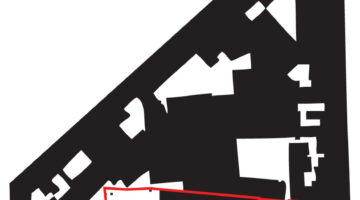
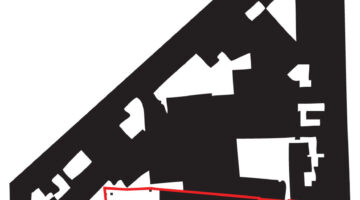
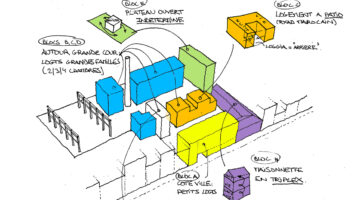
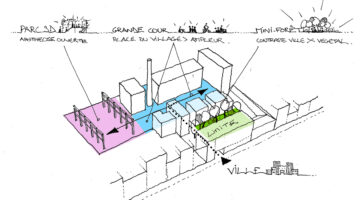

Soap factory Heymans
Main objectives of the project
The Savonnerie Heymans complex reflects a truly sustainable approach by recreating a real new neighbourhood of 42 low-energy and passive social accommodations including apartments, lofts, duplexes and Maisonettes.
Date
- 2010: Rehabilitación
Stakeholders
- Architect: Marie Moignot
- Architect: Xavier de Wil
- Architect: Gilles Debrun
Location
Country/Region: Belgium, Brussels
Description
Winning scheme of a European competition organised by the developer, the Savonnerie Heymans complex reflects a truly sustainable approach by recreating a real new neighbourhood of 42 low-energy and passive social accommodations including apartments, lofts, duplexes and Maisonettes. Although a 100% public housing scheme, thanks to the diversity of its program the Savonnerie Heymans provides a variety of spaces echoing the diversity of the people living in the very heart of Brussels. Glass-enclosed bioclimatic loggias characterise the entire complex, providing an effective acoustical and thermal barrier but also providing a sense of privacy.
On the 6,500m² site of a former soap factory less than half a mile from the GrandPlace, the social housing project creates a real village of 42 sustainable accommodations of different types including studios, 1 to 6-bedroom apartments, lofts, duplexes and Maisonettes.
Although a 100% public housing scheme, thanks to the diversity of its program the Savonnerie Heymans provides a variety of spaces echoing the diversity of the people living in the very heart of Brussels. Glass-enclosed bioclimatic loggias characterise the entire complex, providing an effective acoustical and thermal barrier but also providing a sense of privacy.
Considering Brussels rapid growth in population, the scheme features high density accommodations equipped with amenities such as a room for social meetings and events, a crèche and extensive public space: the Mini-forest garden, the 3D landscaped park and playground and the main promenade.
All the existing valuable - but not listed - historic buildings and elements such as the chimney, the main 19th century house on the street and the postal relay were retained and integrated into the complex (the 40m high chimney, for example, was used as part of the underground garage ventilation system).
The glass-enclosed bioclimatic loggias provide each housing unit with a state-of-the-art acoustical and thermal barrier requiring no expensive/complicated services to run and lowering considerably energy consumption. The Loft building has been treated one step further as thanks to super-tight insulation, the building is now considerate Passive and requires less than 15 Kw/m2 per year to heat.
Located on the site of a former soap factory, the decontaminated land now welcomes a high-density social housing complex that provides a series of private outdoor spaces allowing its occupants to interact easily with each other and creating a convivial, village-like atmosphere.
The scheme was intentionally developed around the concepts of sustainable development (socially, economically and environmentally) and relies on low-serviced buildings. The glass-enclosed bioclimatic loggias provide each housing unit with a buffer acting as a state-of-the-art insulation tool lowering considerably energy consumption and protecting from the city centre noises. They also allow sharing the variety of arrangements of the semi outdoor space of each individual unit.
Beside the loggias, the scheme also features a collective heating system for the entire site (cogeneration), sanitary hot water heated by 60m² of solar panels, rainwater harvesting and natural materials for insulation (hemp fibres, expanded cork etc.). Whenever possible, existing buildings and structures have been retained and reused.
